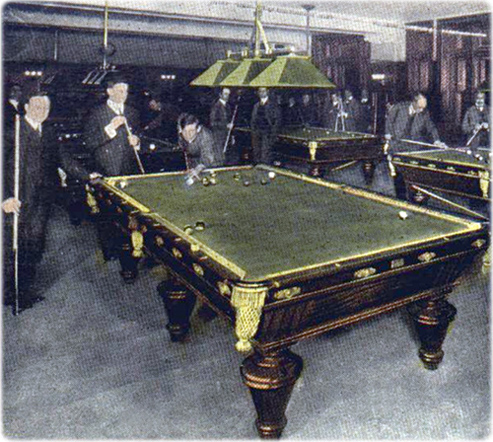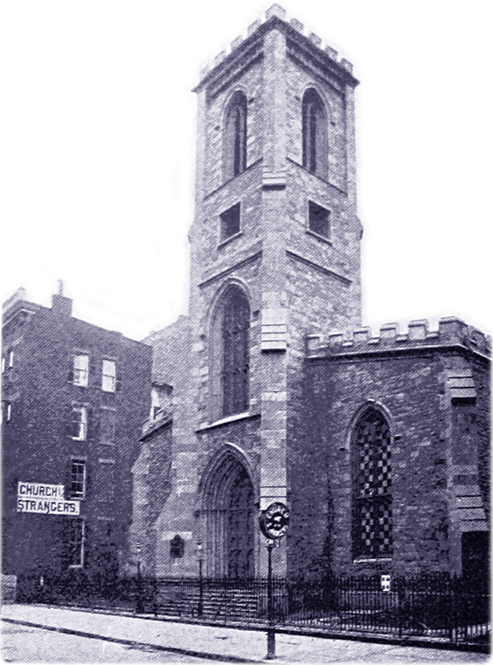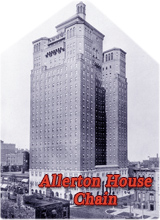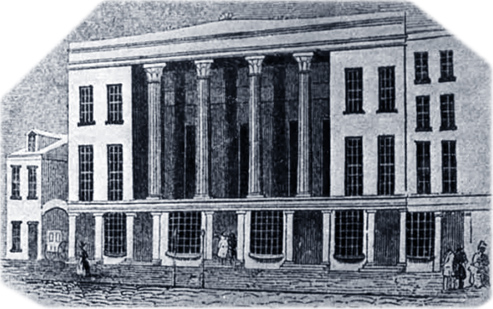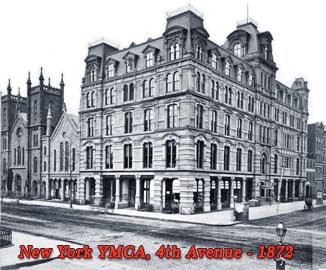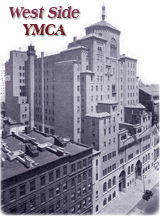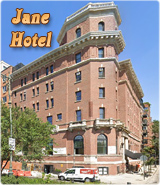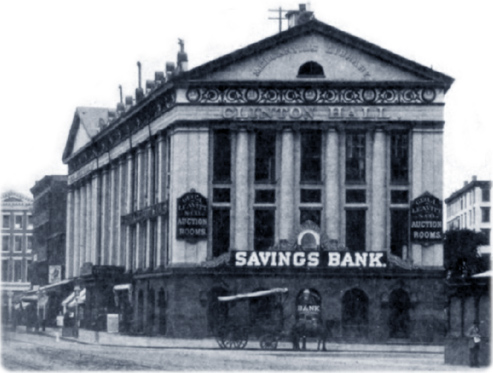The YMCA (Young Men's Christian Association), commonly known as "the Y" in the United States, is a non-profit organization founded in London, in 1844, by George Williams (1821-1905), as a supportive community to help young men address social challenges and also provides accommodation for its members. The Association has grown to reach over 65 million people in 120 countries. Now it welcomes men and women of any or no faith, of any race or background. Its mission is to empower young people and communities worldwide to build a just, sustainable, equitable and inclusive world, where every person can thrive in body, mind and spirit. The North American YMCAs formed a confederation in 1854 and the World Alliance of YMCAs was formed in 1855.
The first YMCA in the United States was organized in 1851, at the Old South Church, in Boston, Massachusetts, by Captain Thomas Valentine Sullivan (1800-1859), a U.S. seaman that became a missionary in his retirement. Sullivan led a group of Christians from various churches and the first YMCA in the United States opened on 29 December 1851, in Boston. Today, the national resource office of YMCA of the USA is in Chicago, Illinois. It is not a parent organization and every YMCA location is independently operated.
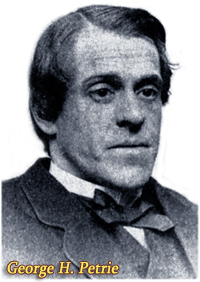 On
May 28, 1852, a group of young men gathered in the lecture room of the old
Mercer Street Presbyterian Church (photo on the right), at Waverly Place, for
the founding meeting of the New York Young Men's Christian Association. At that
public meeting, 173 young men of the 300 in attendance enrolled as members. By
the end of the first year there were a thousand members.
On
May 28, 1852, a group of young men gathered in the lecture room of the old
Mercer Street Presbyterian Church (photo on the right), at Waverly Place, for
the founding meeting of the New York Young Men's Christian Association. At that
public meeting, 173 young men of the 300 in attendance enrolled as members. By
the end of the first year there were a thousand members.
The name of the organization had been chosen at a meeting at George H. Petrie's home on April 21. Petrie was then 24 years old and worked in the offices of his family's firm of J. and A. Petrie at 27 William Street. He had visited the Great Exhibition of 1851 in London, where YMCA tracts were distributed to visitors. On the occasion, he also visited the Association's headquarters in Gresham Street, London. After returning to New York, he began looking for likely members of the Association he envisioned.
On June 30, a second meeting at Mercer Street adopted a constitution and elected officers to the New York YMCA. The constitution stated as its object "the improvement of the spiritual, mental and social condition of young men", it set the age limit at under 40 and restricted active membership to those who were members of an evangelical church. Duties of members included to "seek out young men taking up their residence in New York and its vicinity and endeavor to bring them under moral and religious influences by aiding them in the selection of suitable boarding places and employment, by introducing them to the members and the privileges of this Association, securing their attendance at some place of worship on the Sabbath, and by every means in their power surrounding them with Christian associates". George H. Petrie was among the 20 members designated as a board of managers and Oliver P. Woodford was elected president.
The New York YMCA officially opened on September 20, 1852, in two rooms of the third floor of the old Stuyvesant Institute building at 659 Broadway (illustration on the right). It was prepared to serve as a reading room and a meeting place. This building had been sold, in 1851, by the New York University.
Shortly after the New York YMCA founding and before 1869, other independent associations were organized in Brooklyn (1853), Williamsburg, Staten Island, Greenpoint, New Utrecht, Harlem, Grand Street and Varick Street. Later, more YMCAs were formed as branches of the parent organizations of New York and Brooklyn. Other independent YMCA organizations also merged with the New York or Brooklyn associations to become branches.
In 1854, the New York YMCA, then with more than 1,600 members, moved to larger premises in the Clinton Hall at 13 Astor Place, home to the Mercantile Library. The building, formerly the Astor Place Opera House, reopened in mid 1854 as Clinton House (photo on the right). The YMCA occupied a spacious lecture hall in the basement and several class-rooms.
Later, the New York YMCA also operated in other rented facilities in Manhattan, including in Waverly Place, Bible House and 3rd Avenue and 9th Street.
In the years that followed, rising tensions over slavery were present at many meetings of American YMCAs. As a result, the New York YMCA membership declined considerably in the years leading up to the Civil War.
In 1853, the Library Committee of the New York YMCA banned Harriet Beecher Stowe's Uncle Tom's Cabin from the reading room. Many members protested. In the same year, the first YMCA for African Americans was founded in Washington, D.C., by Anthony Bowen, a freed slave (in the early 20th century there were three in New York City). During the Civil War (1861-1865), some YMCAs in New York raised troops, including New York's 176th, the Ironsides Regiment. Most YMCAs in the South ceased to exist during the war. In 1866, African Americans organized YMCAs in New York City, Charleston, South Carolina, and Harrisburg and Pennsylvania. Others were organized in the following years.
 In
the last decades of the 19th century, the New York YMCA greatly prospered under
the leadership of Robert Ross McBurney (1837-1898), an immigrant from northern
Ireland. McBurney was first appointed as librarian of New York YMCA, in 1862,
and later a director. He became chief executive in 1883, a post he held until
his death in 1898. His influence on the the development of the YMCA in New York
was profound. For example, he helped develop the metropolitan concept of YMCAs
that still operates in major US cities today. He also helped the national
headquarters of the YMCA of the USA to be located in New York (today in
Chicago).
In
the last decades of the 19th century, the New York YMCA greatly prospered under
the leadership of Robert Ross McBurney (1837-1898), an immigrant from northern
Ireland. McBurney was first appointed as librarian of New York YMCA, in 1862,
and later a director. He became chief executive in 1883, a post he held until
his death in 1898. His influence on the the development of the YMCA in New York
was profound. For example, he helped develop the metropolitan concept of YMCAs
that still operates in major US cities today. He also helped the national
headquarters of the YMCA of the USA to be located in New York (today in
Chicago).
In December, 1864, the New York YMCA opened new and larger quarters at 161 Fifth Avenue, corner of 22nd Street, the last of its temporary homes.
In November 1865, the New York YMCA launched a campaign to erect its own building. In February 1897, the organization authorized the purchase of a site on the southwest corner of 23rd Street and Fourth Avenue. On January 13, 1868, ground was broken and construction started. The building was completed in November, 1869, and dedicated on December, 2.
In 1869, the New York YMCA moved into a large building, at 52 East 23rd Street, on the corner of Fourth Avenue, the first purpose-built YMCA in New York. It was designed by architect James Renwick, Jr. It included a library and reading room, rooms for games, social parlors, a gymnasium, baths, a bowling alley, classrooms, lecture rooms and an auditorium.
The first YMCA opened on the Bowery, in 1873.
The West Side YMCA opened in 1896, initially on West 57th Street at Eighth Avenue. The current building, constructed in 1928-1930 at 5 West 63rd Street, is home of the headquarters of the YMCA of Greater New York, located in the 6th floor.
In 1924, the Brooklyn YMCA merged with the YMCA of Queens to form the Brooklyn-Queens YMCA. In 1956, the New York organization merged with the Brooklyn and Queens YMCA to form the YMCA of Greater New York, the largest YMCA in North America.
